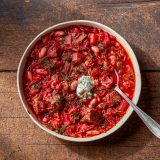The Dnipro River cracks and moans, its iced surface shifting and buckling, warmed by sunlight washing across it, frigid currents tugging at the underside. The air is bitter with frost, but Stanislav Kots seems unbothered, enveloped in a fog of savory-sweet steam rising around him from the cast-iron kettle he tends with a wooden spoon.
Kyiv is visible on the horizon, a 30-minute drive from Oseshchyna, the 175-person village where we cook at water’s edge. February hardly is prime time for outdoor cooking in Ukraine, but with rolling blackouts and Russian missile strikes, electricity is unreliable. Underscoring it all, air raid sirens drown the gentle sounds of the simmering pot.
Kots persists cooking regardless, stirring and feeding wood to the urn-like stove beneath the kettle. At the start of the war, Russian soldiers got within a few kilometers of here. But as they had so many times in previous conflicts, the region’s many rivers slowed the invasion enough for Ukraine to push back. Kots brought his mother here for safety shortly after.
Today, he is making borsch (the preferred Ukrainian spelling), and neither cold nor klaxon will deter him. As for so many Ukrainians, his cooking the nation’s what-have-you soup of beet and meat has taken on desperate and deep meaning, an act of cultural and culinary defiance in the face of an invasion. “Borsch is very important for Ukrainians,” he says. “It is our life.”
A high bar for a single dish. And if your country hasn’t been invaded recently, it could sound hyperbolic. Kots ladles a bowlful for his mother, then me, then himself. We eat the scarlet-tinged soup—thick with shredded beets and pork, flecked with dill and dabbed with sour cream—standing around the fire, warming ourselves inside and out.
So forgive me, because I went into this thinking I didn’t like borsch. And maybe it was merely the moment or the emotions or the war zone fatigue, but it was one of the best things I’ve eaten. Sustaining and comforting. Thick, but not heavy. Sweet, yet also meaty and savory. And an undercurrent of smoky, spicy complexity that added depth without overwhelming.
In that moment, it was clear: If I was to understand Ukraine—and Ukrainians—at all, I needed to understand borsch.
AN EARLY VICTORY
Russia justified its February 2022 invasion of Ukraine with widely discredited claims that the countries are culturally indistinct. Ukrainians obviously feel otherwise, but in a nation where until recently nearly half the population (and in some regions three-quarters) spoke Russian at home, it was an argument muddied by a complex history.
Ukrainians needed a cultural linchpin, something that could turn the tide, if not on the battlefield, then in the minds of the people. Ievgen Klopotenko knew the answer: borsch. “Just one dish changed the behavior of 40 million people,” Klopotenko, Ukraine’s best-known celebrity chef, told me as we walked past bombed-out buildings near his Kyiv apartment.
Again, it sounds exaggerated, right? But we underestimate how intrinsic borsch is to this country’s soul. More than a meal, it represents history, family and centuries of tradition. It is eaten always and everywhere, and its preparation is described almost reverentially. “It’s our symbol,” Klopotenko said. “Borsch is our leader.
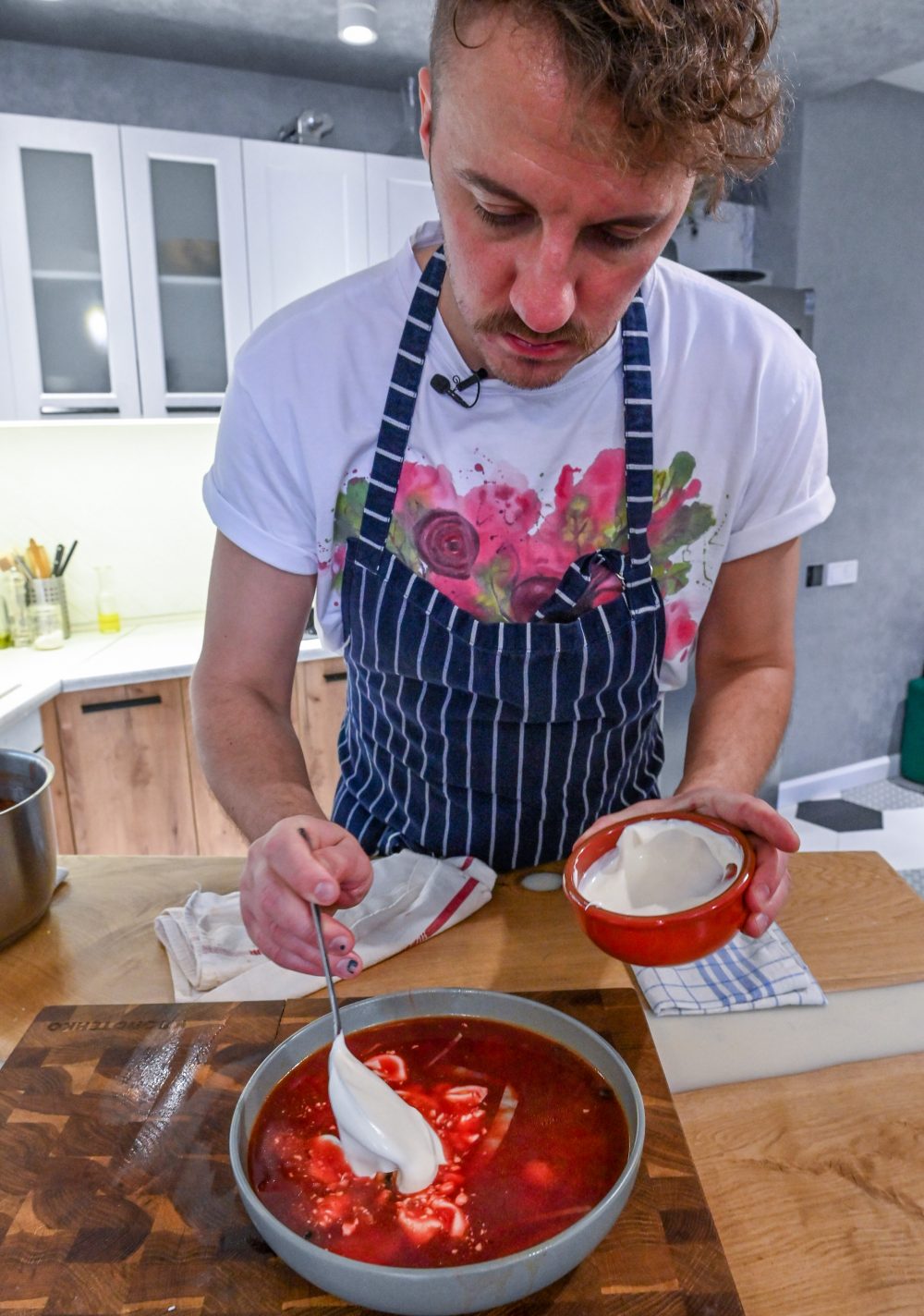
Which is why he led a lobbying effort to persuade UNESCO to declare borsch a uniquely Ukrainian dish. He’d begun the push in 2018, motivated by the sense that Ukrainian food—ditto the country’s culture writ large—wasn’t being true to itself. Much of Ukraine’s identity, from language and food to fashion and architecture, had been subjugated to Russian influences.
Before the start of Soviet rule in 1917, Ukrainian cuisine was more diverse and more robustly seasoned. That was quashed in favor of a more uniform palate with socialist sensibilities. Even after the dissolution of the USSR in 1991, Ukraine’s cuisine didn’t quite bounce back.
But Russia’s invasion and annexation of Crimea from Ukraine in 2014 was a trigger. Trying to identify and hold on to Ukrainian heritage, Klopotenko and others began researching pre-Soviet Ukrainian cooking, hoping to return it to the mainstream and give people another toehold for reclaiming their culture.
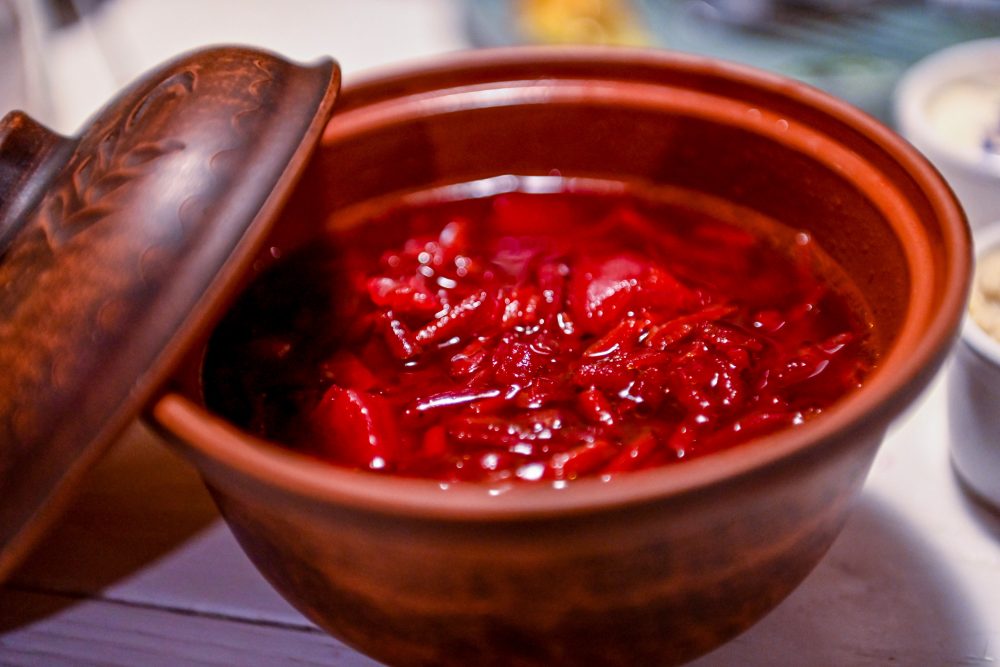
Though variations of borsch are made across Eastern Europe, written records tie borsch to Ukraine dating to at least the 16th century. UNESCO issued a fast-track decision in July 2022, declaring Ukrainian borsch an asset of “intangible cultural heritage” in need of preservation, a move that essentially gave Ukraine bragging rights to the dish and infuriated Russia.
“Russia wanted to take borsch from us. And I started a war over it,” Klopotenko said. “Borsch paved the way. That’s when people realized they could be proud. We are eating our cultural heritage. Before, it was just food.”
BORSCH BASICS
So what is borsch? It depends on who and when you ask. If we were in Italy, we’d consider it cucina povera, the sort of dish made from whatever is on hand. It began as a soup of little more than carrots, cabbage and—of course—beets. In time, potatoes, peppers, tomatoes and meat were added. Today, it’s exceedingly seasonal and regional.
“Borsch is a mirror of our gardens,” Klopotenko explained. “As our gardens change, our borsch changes.”
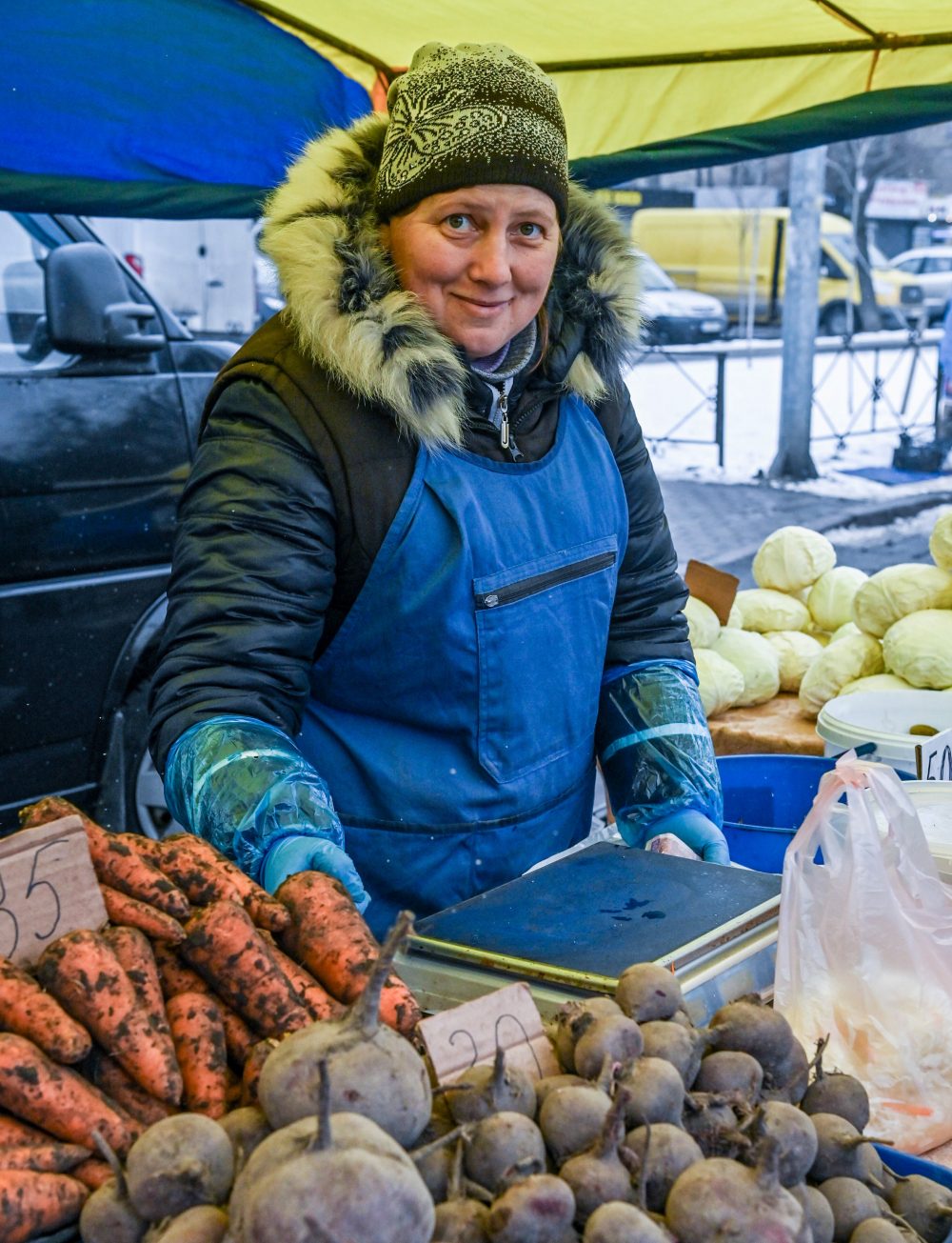
If there is a formula to it, it’s prescriptive more of flavor than specific ingredients. Beets are a constant. How they are added is up to the cook. They could be raw, cooked or pickled, or maybe just the juice, often some combination of all. There also is stock, but it could be pork, beef, vegetable or—in Odesa along the Black Sea—even fish.
Next, add whatever is handy or seasonal, though potatoes almost always are part of the equation. Pork and beef are classic, but vegetarian versions abound. The must-have flavor that surprised me most? Smoke.
Though Kots’ riverside cooking was necessity, wood-fire cooking of course once was the norm in Ukraine. And it imparted a distinctive smokiness to the cuisine, one cooks today labor to recreate. As wood stoves fell from favor, cooks leaned on ingredients to deliver the flavor they’d come to expect, mostly smoked pears, but also bacon and smoked paprika.
Finally, and almost as importantly as the beets, is balance. A great borsch is defined by how it matches the sweetness of the beets and carrots with the richness of the meat. This is why no borsch is complete without dill—an herbal, fresh counterpoint to the heft of the meat—and sour cream, its acidic tang playing off the sweet vegetables.
RIVERSIDE REVELATIONS
When it comes to soups, I’m the sort who is inclined to simply dump and simmer. Watching Kots, an engineer by training and proficient cook by desire, prepare borsch convinced me there are better ways.
Between too many shots of kalganovka—vodka infused with galangal, a relative of ginger—and many stories of how the war has dislodged the life and people he loved, he prepared his version of the borsch taught to him by his grandparents.
And it began in a skillet, not the kettle. Key to his borsch, and every borsch I tasted during more than a week of eating my way around the region, is sautéing the onions, carrots, tomatoes and beets—but not all of them—before they are added to the other ingredients. I wrongly assumed this was an unnecessary step. Quite the opposite.
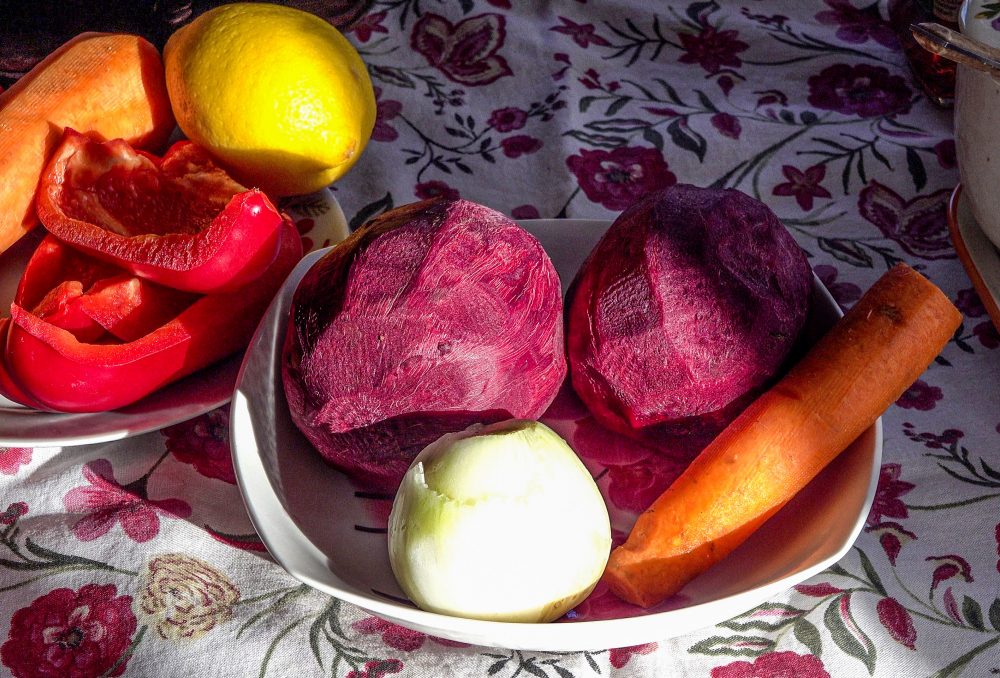
This sautéing of the vegetables not only cooks off excess liquid, it also concentrates the flavors of the vegetables and richly caramelizes their natural sugars to lend deeper flavor. This is yet another throwback to the wood-fire cooking. Borsch traditionally spent many hours simmering away in the oven, giving the root vegetables time to concentrate and enrich the soup.
But more about those beets, the obvious star of the dish. Half were cooked in the skillet along with the onions, carrots and tomatoes. But the other half were added to the kettle raw and only toward the very end of cooking. It’s something I saw other cooks do, too. It’s a way to get multiple flavors and textures from the same vegetable—some meltingly tender, some tender-crisp. Some deeply caramelized, some bracingly fresh. A simple step that added so much to the finished dish.
Kots also took a generous hand with seasonings. Thanks to Soviet rule, herbs, spices and most any seasonings beyond garlic still are in short supply in Ukrainian cooking. That wasn’t always the case. Once, saffron, paprika, ginger and more were common. As cooks like Klopotenko and Kots explore the origins of their own cuisine, those flavors are coming back.
And so Kots was liberal with bay leaf, caraway, even star anise, along with the usual garlic and dill. The difference was profound, adding a complexity I hadn’t tasted in the (many!) other borsch I tasted in my travels.
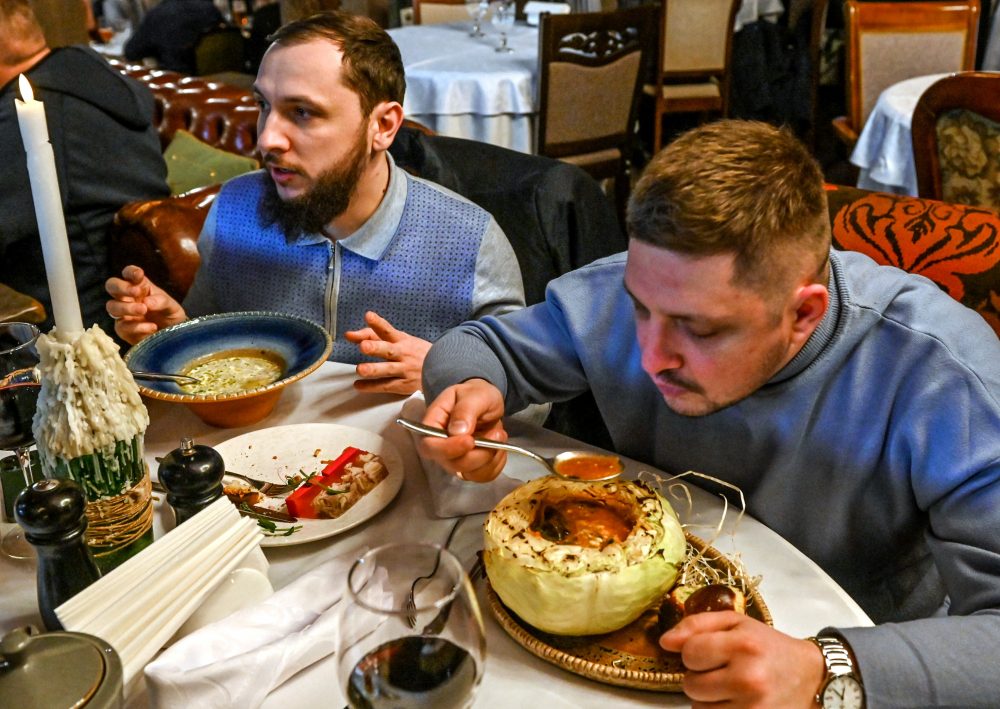
Combined with beans and pork, the result was the sort of taste that stays with you, all the more powerful for the memories and emotions attached to the moment. Sharing food with strangers who fast become friends always is moving. When they entrust you with cherished family recipes, it’s even more so. When they do so in fear because their culture—their very soul—is threatened, words struggle to capture the moment.
But the flavors do. And those linger. And maybe show a way forward.
Through it all—for all Ukrainians—there was borsch. The ubiquitous soup that has become a symbol of Ukrainian resistance to the invasion.
